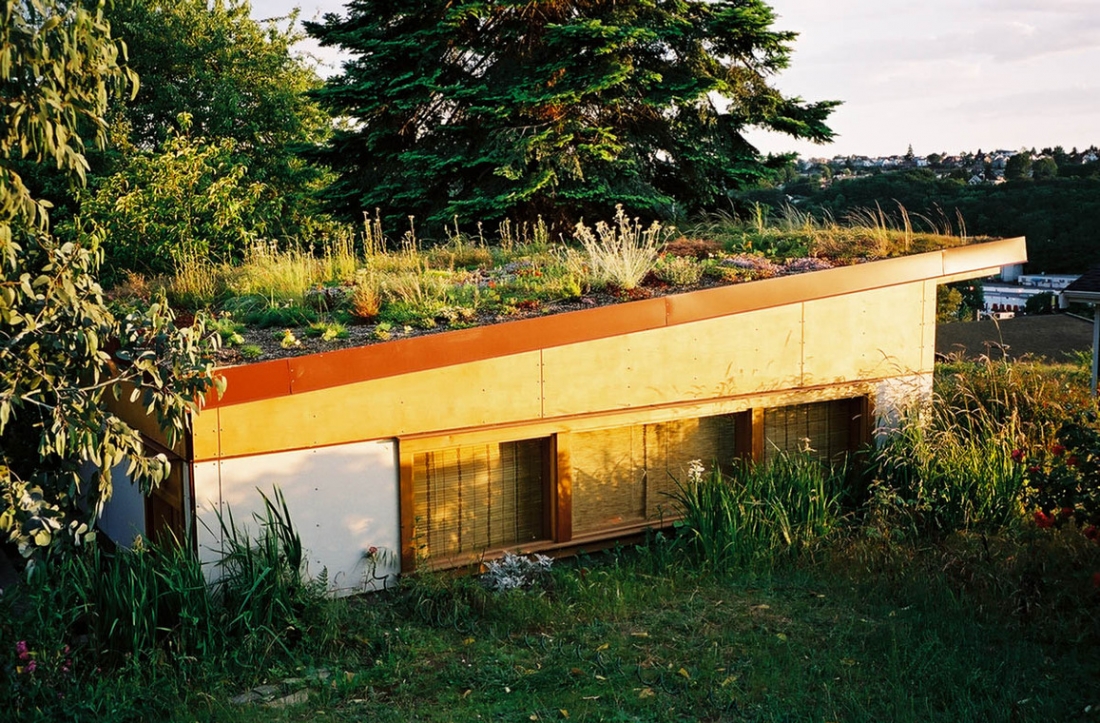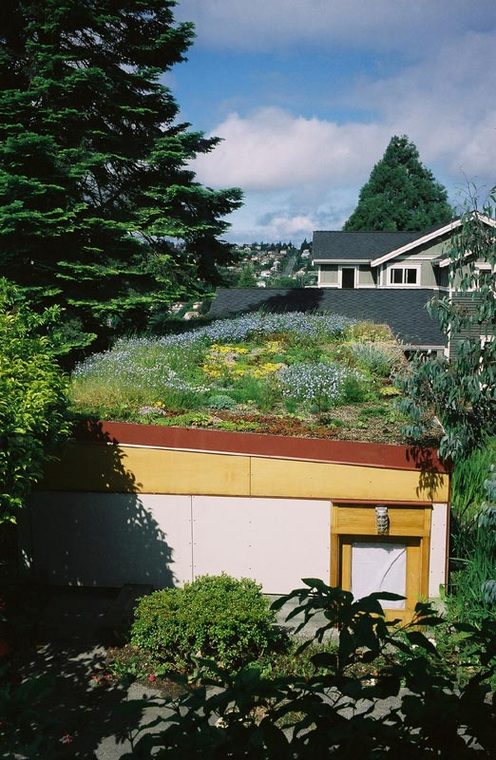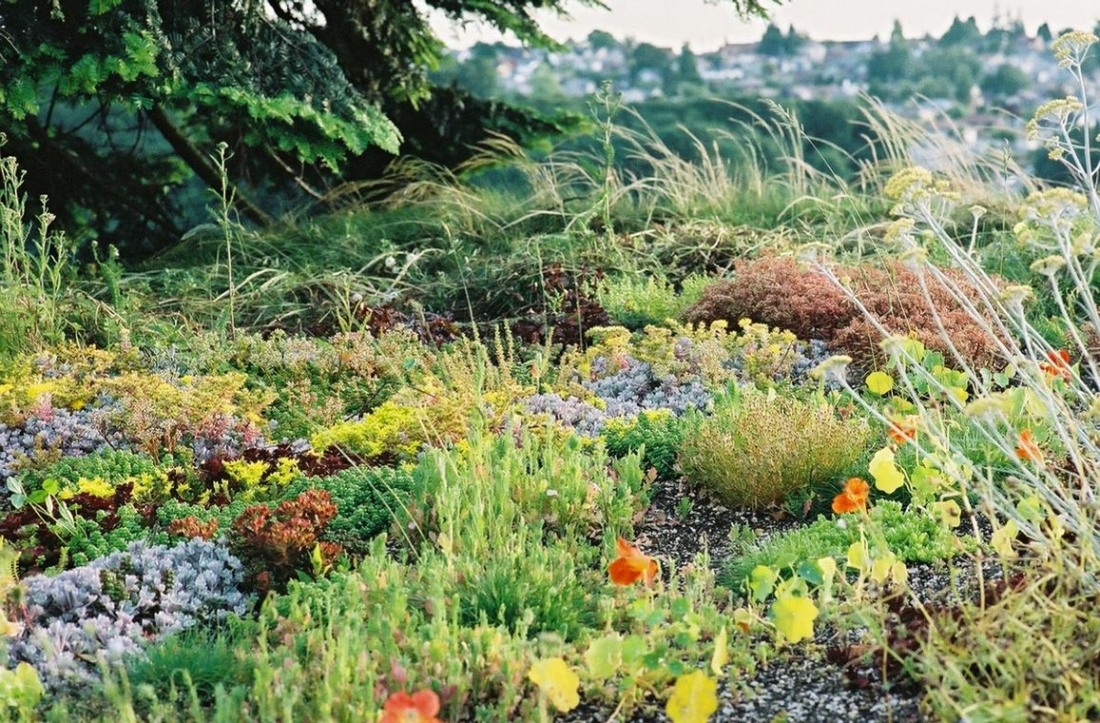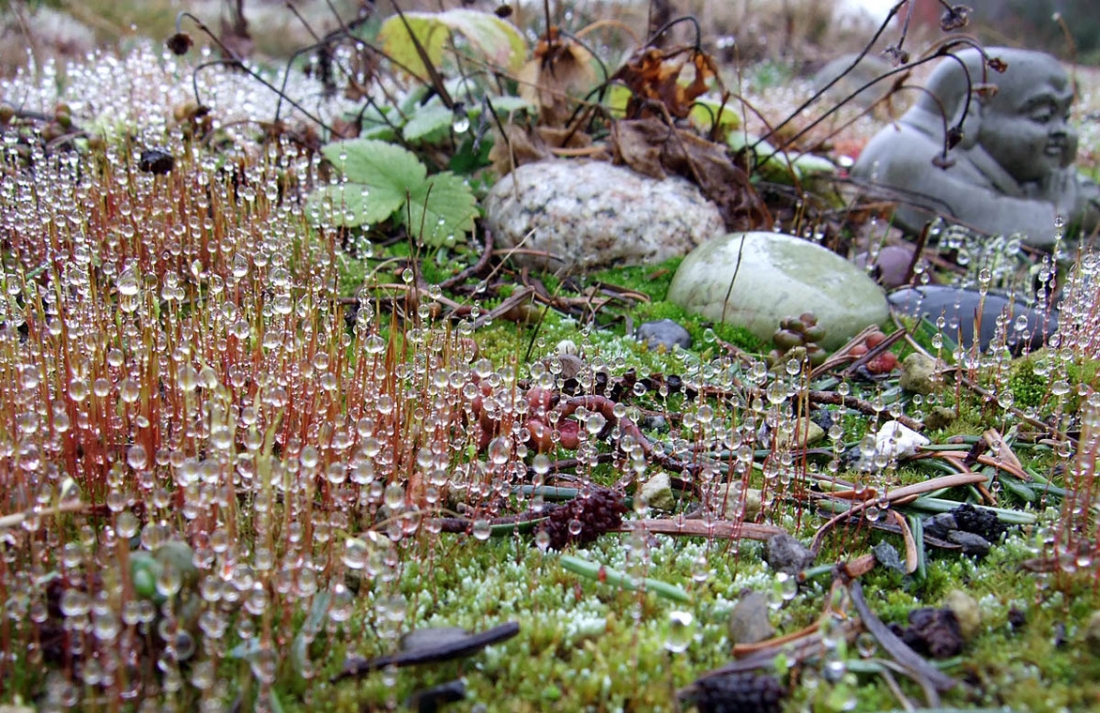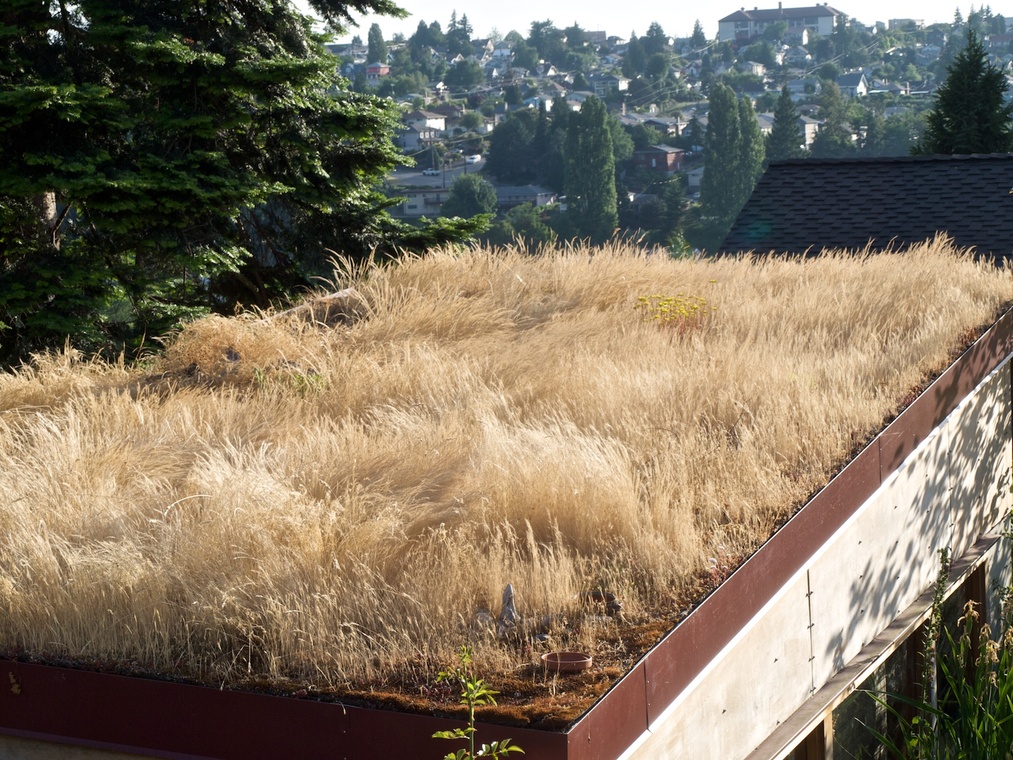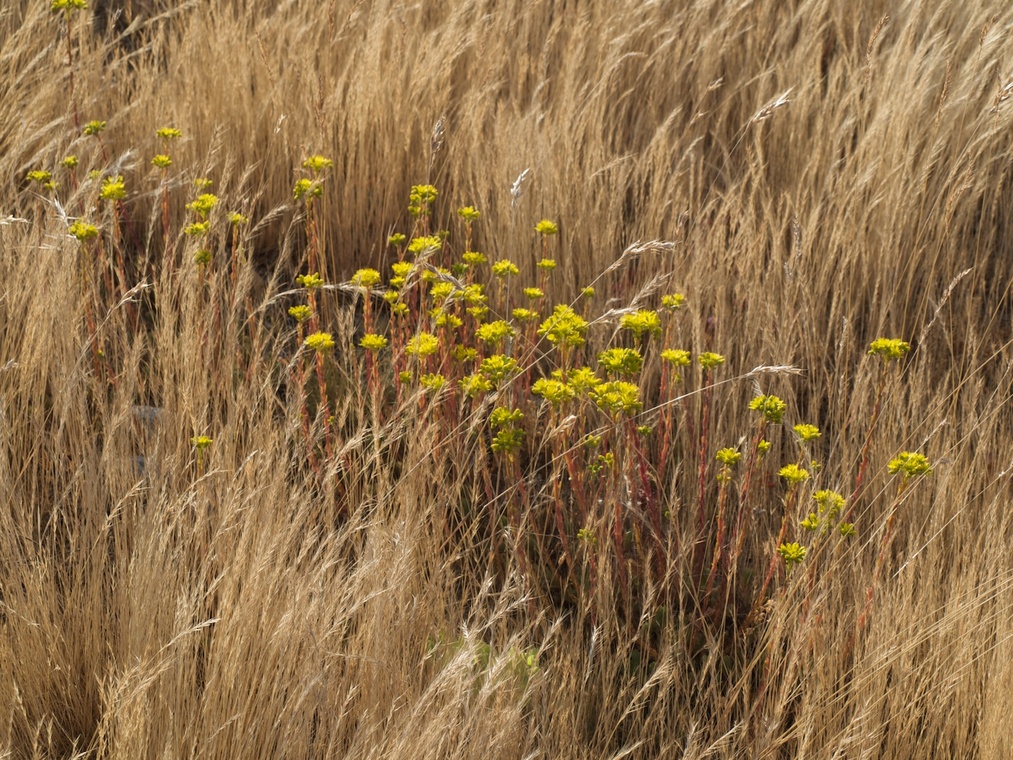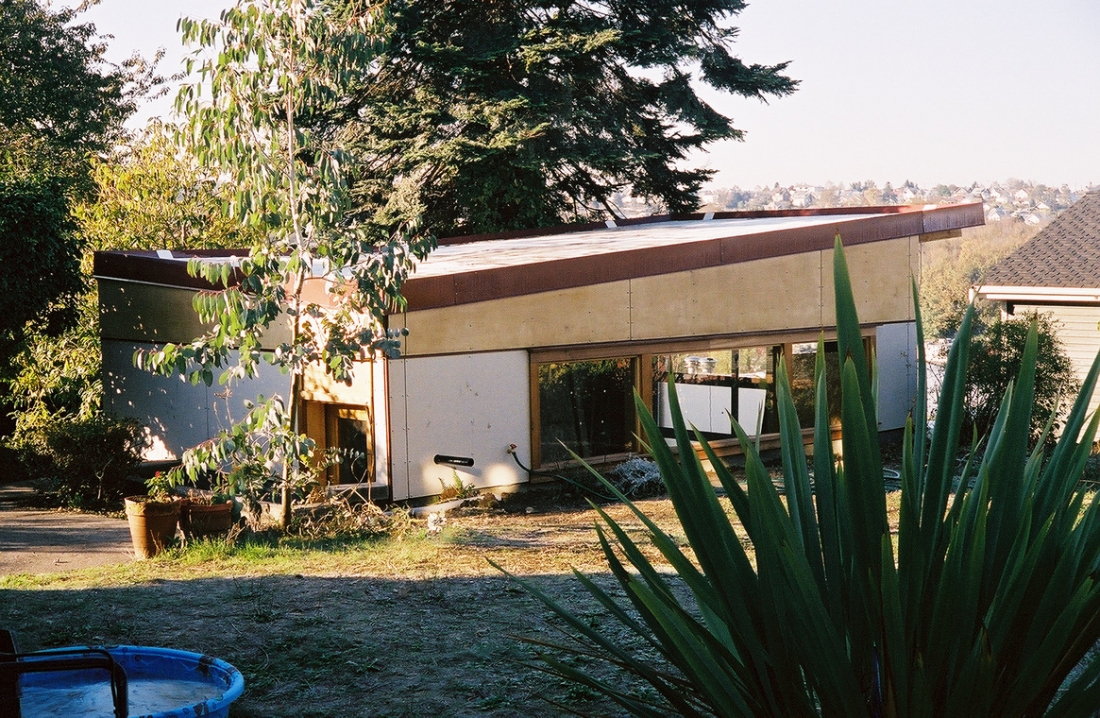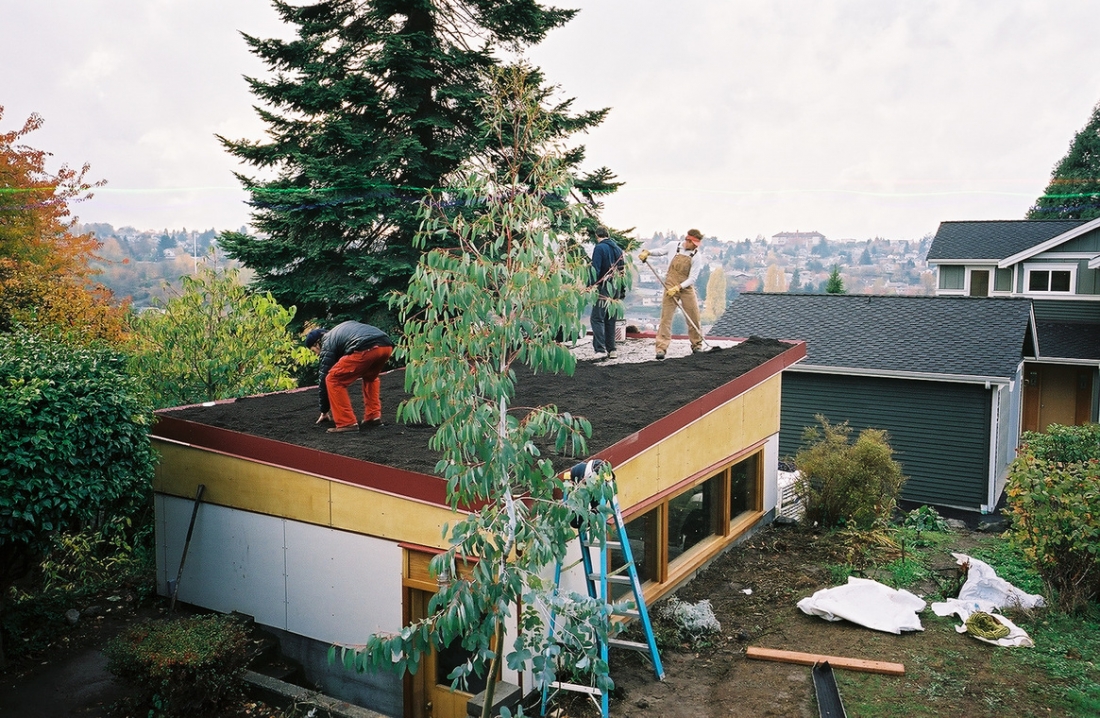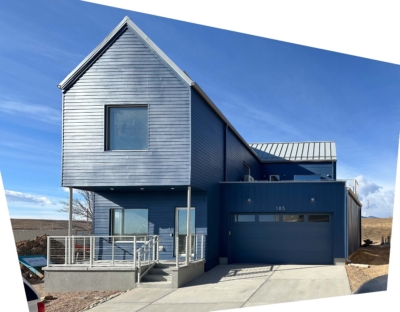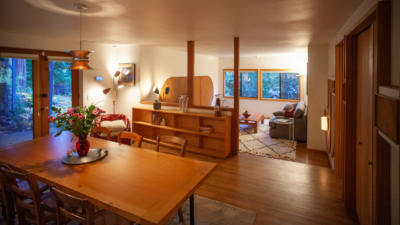Planted roofs, also known as green roofs or eco-roofs, are enjoying a surge of interest in the Northwest, brought on in part by the Northwest EcoBuilding Guild’s Eco-Roof Project. They have many advantages. They’re beautiful. They reduce the intensity and duration of rainwater run-off. They filter water in much the same way as a wetland does. They reduce the build-up of heat in urban areas. They absorb sound. To some degree, they provide insulation and thermal mass. They protect the roof membrane below from degradation caused by the sun, and so (detailed correctly) increase the longevity of the roof. They provide habitat. They add garden space, and can even produce some edibles.
The garage was built to accompany the 1950 rambler in the close-in Mt. Baker neighborhood of Seattle my then-wife and I purchased in June of 2003, the week before our son was born. In 280 square feet (a one car sized garage) when built it housed and protected one bicycle, three motorcycles and our Mini Cooper, as well as providing space for a small workshop and every man’s dream, lots of pegboard. (We sold the Mini in 2009 and my last motorcycle in 2010. Just bicycles now!) On the pegboard, my father’s and grandfather’s hand tools. Planted on the east side next to the stairs down into the garage, the rose bush my grandfather brought with him from Scotland when he emigrated in 1907, transplanted from outside my parents’ house in Ohio after they passed away.
The previous owner of the house built an illegal deck atop the foundation of the original off-the-alley terraced carport just prior to putting house up for sale, clearly without the benefit of a structural engineer! The flimsy deck was deconstructed, and the new structure built on the existing foundation and stem walls—almost entirely from wood salvaged from the existing deck.
Since it was our own house (rather than a client’s!), we thought it would be a great opportunity to experiment with a less expensive residential alternative to $15/SF proprietary (and warranted) green roof systems used on commercial projects, and so promote the use of green roofs in residential applications.With the help of everyone involved (see long list of credits below) I believe we succeeded admirably.
About a third of the roof is planted with Eco-Turf—a mixture of baby blue eyes, red clover, yarrow and fescues. The other two-thirds is planted with various drought-tolerant sedums. We’ve also added strawberries, nasturtiums and poppies.
Other than irrigating the roof through the first summer to establish the plants, we’ve spent about an hour doing “maintenance” on the roof in its first three and a half years. Less, in other words, than would have been required by a low-slope roof of any other kind.
Our garage was published in the March/April 2006 issue of Northwest Home & Garden, the March 2006 issue of Dimensions, the newsletter of the Washington State chapter of American Society of Interior Designers, and the Fall 2006 issue of West Sound Home & Garden. It was on a tour organized by AIA Seattle’s Committee on the Environment in June 2006. It was the Project of the Week on Greenroofs.com in July 2006 and again in April 2010. It is featured in the book Manspace: A Primal Guide to Marking Your Territory by Sam Martin, and in Terence Conran’s Eco House Book. In 2010, a snippet of video of the project appeared in advertisements for the Pepsi Refresh Project, and it was blogged about on Worldchanging.com.

